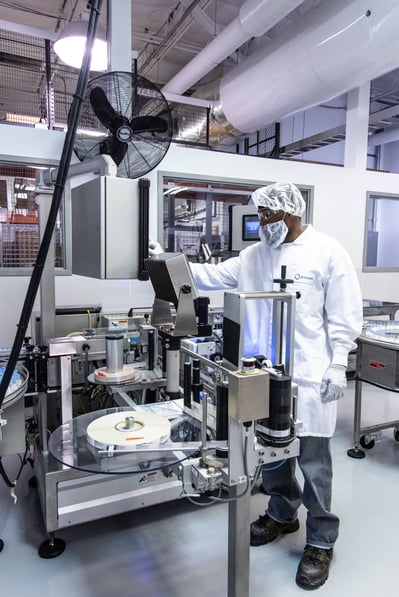1 min read
Component Selection Equates to Successful Sterile Fill-Finish Manufacturing
As a contract manufacturer, Alcami provides experience in all aspects of the manufacturing process, including fill volume accuracy, plunger...
2 min read
 Alcami
:
Mar 17, 2020 10:00:00 AM
Alcami
:
Mar 17, 2020 10:00:00 AM
Even well-designed product formulations can fail if it is contained in inappropriate packaging. How does one decide which packaging to use for a product?
Foremost, packaging has to protect the product from degradation and damage. Material compatibility, water activity, and dynamic vapor sorption testing, and forced degradation studies during development are key in identifying the risks. different barriers can protect from moisture, light, or gases, such as oxygen or carbon dioxide. Blistered products may use cold-formed aluminum to block light completely. Vials, at times, use light protective sleeves or amber-colored glass for the same purpose. Bottled products may require the use of a coil to keep tablets from breaking during shipment. These are just a few examples of the ways packaging is used to protect the product from its environment or handling. Early evaluation of the formulated product is pivotal to selecting the right mitigation strategy.
Additionally, the packager needs to know how the product will be used and who will be using it. The appropriate package for a clinical setting may need to be blinded. When a package is blinded, the identity and strength of the product are hidden such that the patient is blind to what is being taken. Blister packaging can be utilized to make it easier to track patient compliance. A product intended for commercial distribution may need child-resistant packaging. This can be accomplished through the use of peel-push child-resistant backing for blister packs and child-resistant closures on bottles.
Patient-Specific Labeling

Alcami has broad experience using packaging to overcome complications and aid in compliance during clinical trials. For example, one client used patient-specific labeling on two bottles that needed to stay to together throughout the lifecycle of the product. "Bottle A" and "Bottle B" were both assigned to "patient #1234," and the two bottles needed to be contained in a single package for the patient to avoid confusion or error. Alcami made it stress-free to get the correct bottles into the hands of the correct patients by using a carton with room for two bottles as the secondary package. The carton also allowed for the application of a patient-specific label, which matched the patient records on the bottles' labels. More complex clinical designs can leverage these types of approaches to enhance safety and compliance.
Tracking Product Usage
Highly accurate product usage tracking was critical for one client's double-blinded study. Alcami's packaging team leveraged blister cards for packaging the drug product, making it easy for the clinicians to assess how much product was taken and determine patient compliance. Additionally, with the implementation of serialization, tracking product lineage throughout their lifecycle is easier and more accurate than ever.
Label Complications
Another client was having difficulties with the label print rubbing off in the field. The product required refrigeration, and condensation formed when the product was removed from storage. This water impacted the label durability, making it easy to remove some of the printing. Our packaging team proposed an overwrap feature with a longer label, including a clear overwrap portion to cover the print needing protection. This use of the overwrap successfully eliminated the issue.
Summary
Proper packaging is an often overlooked component in successful product development. For pharma packaging solutions, Alcami is well equipped to handle a variety of unique and customized packaging and serialization needs and to support its regulatory requirements. No matter the configuration, Alcami is committed to providing solutions for all of our clients' packaging needs.
1 min read
As a contract manufacturer, Alcami provides experience in all aspects of the manufacturing process, including fill volume accuracy, plunger...
7 min read
Increasing prevalence of drug misuse and abuse is driving a heightened and more stringent approach to abuse-deterrent formulations. Possibly the most...
2 min read
A holistic approach to validation and quality assurance is essential. Biologic drugs are highly valuable in treating diseases, and assurance of...